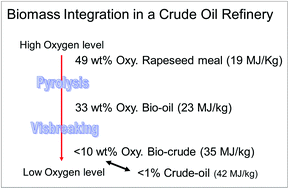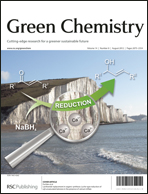Upgrading bio-oils obtained from bio-ethanol and bio-diesel production residues into bio-crudes using vis-breaking
Abstract
Upgrading of bio-oils obtained from rape seed meal and wheat spent grains was carried out by a Thermo-t process similar to vis-breaking at 350, 400 and 410 °C at pressure ranging from 10 to 40 bars of


 Please wait while we load your content...
Please wait while we load your content...